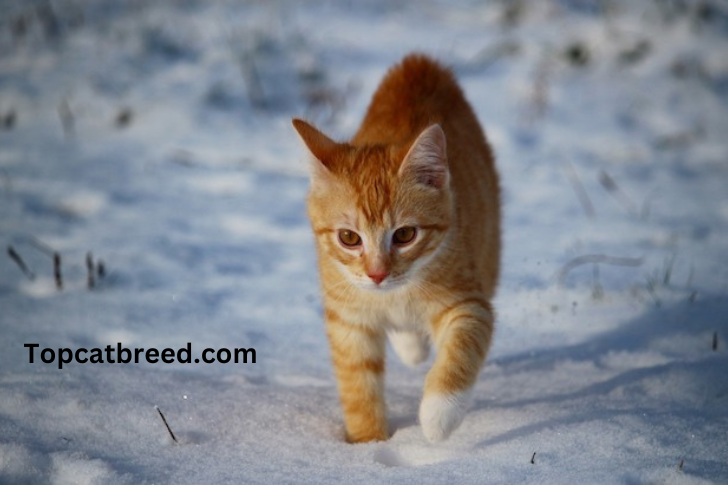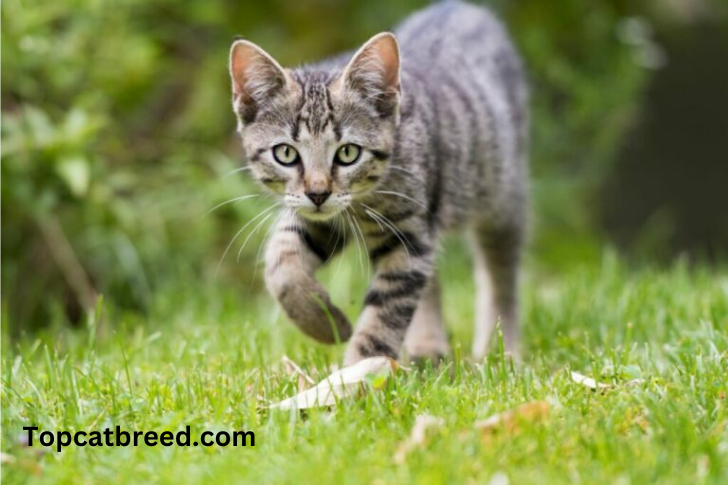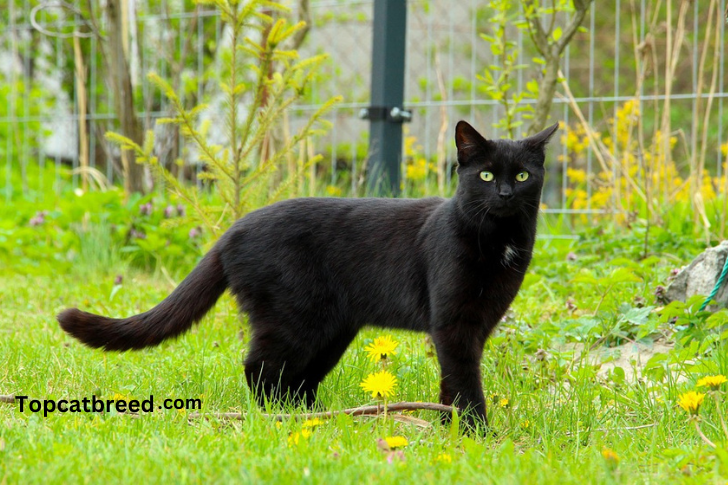Surviving outside is a tough challenge for indoor cats, creatures of comfort and coziness. The allure of the great outdoors can be irresistible, but it’s vital to understand the risks and necessities before allowing your indoor cat to explore the wild. How long Can an indoor cat survive outside? This question echoes through the minds of concerned pet owners who worry about their feline friend’s safety in the unfamiliar world beyond their windows. Indoor cats are sheltered from many dangers that outdoor cats routinely face: traffic perils, predatory wildlife, harsh weather, and contagious diseases. Their reliance on their human caregivers is strong, and the outdoor world presents unfamiliar territory fraught with potential harm.
Yet, the curiosity and wanderlust innate to all felines can lead them to yearn for the uncharted territory. In this exploration, we will delve into the challenges an indoor cat might encounter when venturing outside and the steps you can take to ensure their safety. We will examine the risks and rewards, the importance of training and monitoring, and the essential role of responsible pet ownership in providing indoor cats with the chance to experience a taste of the outside world while keeping them safe. Let’s find out can an indoor cat survive outside?
How long can an indoor cat survive outside?
The transition from the cozy indoors to the great outdoors can be a thrilling yet challenging endeavor for an indoor cat. Understanding how long they can survive outside is crucial for their safety and well-being. Indoor cats are accustomed to a life of comfort and safety. However, they still carry the instincts of their wild ancestors. These instincts can kick in when they step outside, and they may try to explore their newfound territory.
When an indoor cat ventures outside, several immediate concerns arise. Traffic poses a significant danger, and a cat might not understand the perils of moving vehicles. Predatory wildlife, harsh weather, and the potential for contracting contagious diseases all add to the risks.
The duration of time an indoor cat can survive outside largely depends on the environment, the cat’s behavior, and the level of supervision provided. Some cats may quickly realize the risks and return indoors, while others may become engrossed in their new surroundings.
To ensure an indoor cat’s safety outside, it’s crucial to provide supervision and introduce them to the outdoor world gradually. Leash training, enclosed outdoor spaces, and constant vigilance can help your feline friend enjoy the fresh air while remaining protected.
In summary, the duration an indoor cat can survive outside varies, but their safety should always be the top priority. Understanding their instincts and providing a safe and supervised outdoor experience can help strike a balance between curiosity and well-being.
WHAT IS DIFFERNCE BETWEEN INDOOR CAT BREEDS AND OUT DOOR CAT BREEDS?
Cats come in many shapes and sizes, and certain breeds flourish indoors while others thrive outside. Let’s look at the differences between these breeds in layman’s terms.
Indoor Cat Breeds
Indoor cats are like homebodies. They love the cozy life indoors. These cats tend to be more relaxed, sociable, and less rugged. Breeds like Ragdoll, British Shorthair, and Persian are often content with the indoor life.
Outdoor Cat Breeds
Outdoor cats are like adventurers. They’re independent and enjoy the great outdoors. These cats are more rugged, with a strong survival instinct. Breeds like Maine Coon, Siamese, and Bengal are known for their outdoor prowess. They love to climb trees, explore, and hunt.
What Makes the Difference?
The difference comes down to their natural instincts and traits. Indoor cats have been bred for companionship and adapt well to a cozy home. Outdoor cats often have traits that make them more resilient in the wild. Remember, every cat is unique, and some indoor cats might enjoy a bit of outdoor time with supervision. Always consider your cat’s safety and happiness when deciding between indoor and outdoor life.
Also Read. How to train a cat to stay in the yard?
Why Is Going Outside Dangerous for Indoor Cats?

Going outside poses unique dangers to indoor cats. These feline friends are often unprepared for the challenges that await them beyond the cozy indoors. . Indoor cats are typically sheltered from traffic, which can be a major threat to outdoor cats. They may not understand the perils of moving vehicles, making them vulnerable to accidents. A simple lack of traffic awareness can result in life-threatening situations.
Predatory wildlife can also be a menace. Cats might find themselves face-to-face with larger animals, such as coyotes or birds of prey, in unfamiliar territory. These encounters can be life-threatening and may not end favorably for an untrained indoor cat.
Harsh weather Extreme temperatures and heavy rain can be stressful for cats that aren’t used to being outside. Exposure to these factors can cause health problems such as hypothermia in cold weather and heatstroke in hot weather.
Outdoor cats may come into contact with diseased animals, increasing the risk of illness. These illnesses can range from common cat colds to more severe conditions like feline leukemia. In situations like these, quick medical attention is essential.
What Can Kill an Indoor Cat Once Outdoors?
The outside world presents a myriad of dangers for indoor cats that they may not encounter indoors. Understanding these risks is crucial to keeping them safe.
Traffic Accidents: Cats who have never been in traffic may be unaware of the dangers of moving automobiles, putting them prone to accidents. A collision with an automobile can be fatal, emphasizing the significance of being mindful of road safety.
Predators: Larger creatures, such as coyotes and birds of prey, can be dangerous to outdoor cats. These predators may see your cat as prey, which can lead to fatal confrontations if the cat is not watchful and able to flee.
Harsh Weather Extreme temperatures, heavy rain, or snow can cause health problems in cats who are not used to being outside. Frostbite, heatstroke, and other weather-related disorders can arise from exposure, demanding quick medical attention to avoid fatalities.
Contagious Diseases: Outdoor cats may come into contact with diseased animals, increasing the risk of illness. This can include contagious viruses or parasites that can be lethal if left untreated. Timely veterinary attention is vital in such cases to ensure the best chances of survival.
What Can Cat Owners Do to Make Their Cats Outdoor Ready?
Preparing indoor cats for outdoor adventures requires a thoughtful approach. Here’s how cat owners can help their feline companions make a safe transition to the great outdoors.
Supervision: Keep a close eye on your cat while outdoors. Watch for any signs of distress or danger and intervene if necessary. Close supervision is essential to protect them from unforeseen threats.
Leash Training: Train your cat to walk on a leash. This allows them to explore safely while under your control. It’s an excellent way to balance curiosity and safety, ensuring that your cat stays within your reach.
Enclosed Outdoor Spaces: Consider creating a safe and secure outdoor enclosure or “ction” where your cat can enjoy the fresh air without exposure to dangers. This controlled environment prevents encounters with predators and reduces the risk of accidents.
Vaccination and Prevention: Make sure your cat is up to date on vaccines and preventative medications to lessen the chance of illness. Regular veterinarian appointments are essential for keeping your cat healthy and avoiding potentially fatal diseases.
Cat owners can let their indoor cats enjoy the outdoors while remaining safe by understanding the risks and taking proper precautions.
Also Read this. Top 8 most dangerous cat breeds in the world
Is it possible for an indoor cat to survive outside in the winter?

The winter season brings a host of additional challenges for indoor cats venturing outside while cats are known for their adaptability; various factors can influence their ability to thrive in cold weather. From temperature drops and snowy conditions to limited food sources and the risk of frostbite, winter poses specific challenges for indoor cats exposed to the outdoors.
These hazards can jeopardize their well-being, necessitating thoughtful consideration and preparation if you intend to introduce your indoor cat to the winter environment.. Remember that an indoor cat’s adaptation to winter conditions can be challenging, and ensuring their safety and well-being is of utmost importance.
Is It Possible to Teach an Indoor Cat to Go Outside?
Teaching an indoor cat to become an outdoor cat is possible, but it requires careful planning and patience. Start by leash-training your cat, allowing them to get used to the outdoor environment while under your supervision. Gradually introduce them to short outdoor excursions.
It’s crucial to monitor their behavior and ensure they are comfortable with the transition Consider constructing a secure outdoor enclosure, sometimes known as a “catio,” where your cat can enjoy the outdoors while remaining safe from predators. Remember that not all cats adapt well to outdoor life, so keep an eye on your cat’s comfort and well-being throughout the process.
Can an Indoor Cat Learn to Survive Outside on Their Own?
An indoor cat learning to survive outside on their own is a significant challenge. Indoor cats are not exposed to the same hazards as outdoor cats, and the transition can be fraught with risks. Traffic, predatory animals, weather extremes, and contagious diseases are just some of the dangers they may encounter. While some cats may adapt, many are ill-equipped to handle these challenges. It’s essential for cat owners to weigh the risks carefully and provide a safe and supervised transition to outdoor life, if desired.
Is It Better for a Cat to Live Outside or Indoors?

A cat’s preference for indoor or outdoor living is determined by a variety of factors, including the cat’s personality, location, and the owner’s preferences. Indoor cats have longer lifespan and are safer from numerous outdoor threats. They also face fewer risks related to traffic accidents and predatory animals. However, indoor cats may miss out on the stimulation and exercise that outdoor exploration provides.
Providing an enriched indoor environment with toys, climbing structures, and interactive play can help compensate for this. Ultimately, the choice should revolve around meeting the unique needs of each individual cat while prioritizing their safety and well-being. Cat owners can make thoughtful decisions about their feline companion’s living environment by weighing these factors and adopting a cautious approach, with the goal of fostering a content and healthy life for their beloved pets.
FAQS
1: What if an Indoor Cat Gets Outside?
If your indoor cat gets outside, stay calm and search nearby areas. Place familiar scents or their litter box outside your home. Create posters and notify local shelters. Cats can return home, so be patient and vigilant.
2: Can a Cat Be 100% Indoor?
Yes, a cat can live entirely indoors for safety and health. Create an enriching indoor environment with toys and activities. If you decide to introduce them to the outdoors, do so safely with supervision.
3-How Can I Transition My Cat to an Indoor Lifestyle?
Transition gradually by limiting outdoor access and providing indoor stimulation. Use toys, climbing structures, and a clean litter box. Establish a daily routine for consistency. Keep your cat mentally and physically engaged indoors.
4: What Are the Dangers of Allowing an Indoor Cat Outside?
Outdoor dangers for indoor cats include traffic, predators, diseases, and accidents. The risks are significant, making supervised outdoor time safer.
5: What Are the Benefits of Indoor Living for Cats?
Indoor living provides protection from dangers, longer lifespans, and reduced risk of diseases. Enriched environments indoors offer mental and physical stimulation.
conclusion
In conclusion, while indoor cats can possess some survival instincts, the great outdoors poses significant challenges. Unfamiliar territory, potential predators, and various hazards make outdoor life risky for domesticated felines. A gradual introduction to outdoor spaces, supervision, and secure enclosures can provide a compromise. However, the safest environment for an indoor cat remains within the familiar confines of a well-equipped home, ensuring their well-being and longevity in an environment tailored to their domesticated nature.




